Needs and Key Benefits of Supply Chain Digital Transformation
- Due to transparency ⇒ Better decision-making ;
- Because of just-in-time procurements ⇒ A reduction of inventory levels;
- Due to the integrated system in the value chain:
- More visibility of the inventory levels;
- Increases sales;
- Increase profit margins;
- Increase bonding with clients.
- Because of minimizing risk and cost pertinent to the supply chain:
- Improves supply chain flexibility;
- üMore competitive advantage over rivals.
- Due to the reduced number of stages within the selling chains and decentralized warehouses ⇒ Reduced delivery time;
- Because of options are available during decision-making ⇒ Better decision-making on the supply chain management.
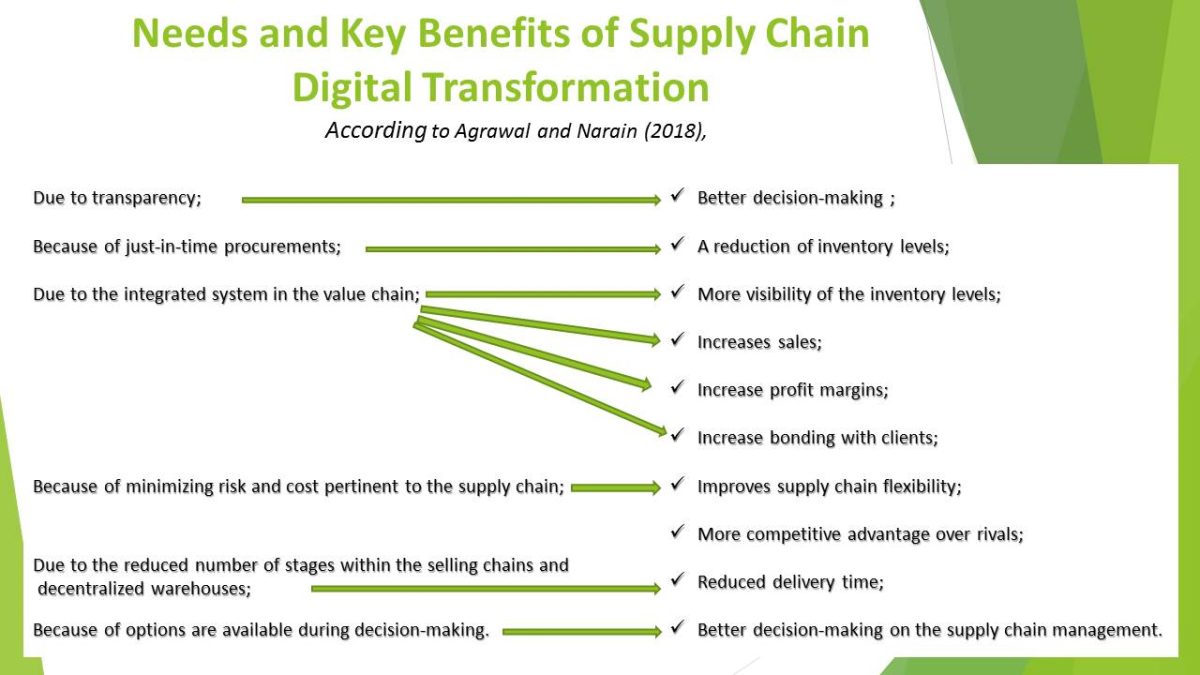
Analytics
Why is this significant?
According to Veridian (2019), there is a need for digital transformation in the supply chain to streamline operations, reduce costs, and improve the employees’ working environment. Data analytic must be able to be turned into actionable insights (Saravanan, 2020). However, if supply chain analytics is not well planned, it can result in opportunity losses and data losses.
In a study carried by Shamout (2019), it was established that supply chain analytics are effective in augmenting the supply chain ingenuity and robustness. Supply chain analytics have been proven to be of great significance in helping managers access relevant data at the right time. The abovementioned data is then used to form the basis for innovation.
Robust analytics capacity is paramount to any organization that earnestly envisions to remain competitive in the digital economy (Dubey, Gunasekaran, & Childe, 2019; Pappas, Mikalef, Giannakos, Krogstie, & Lekakos, 2018). Digital data analytics regarding the supply chain help managers make decisions based only on insight and not instinct. Analytics in digital supply chains aids the development and offering of better products and services within the target market.
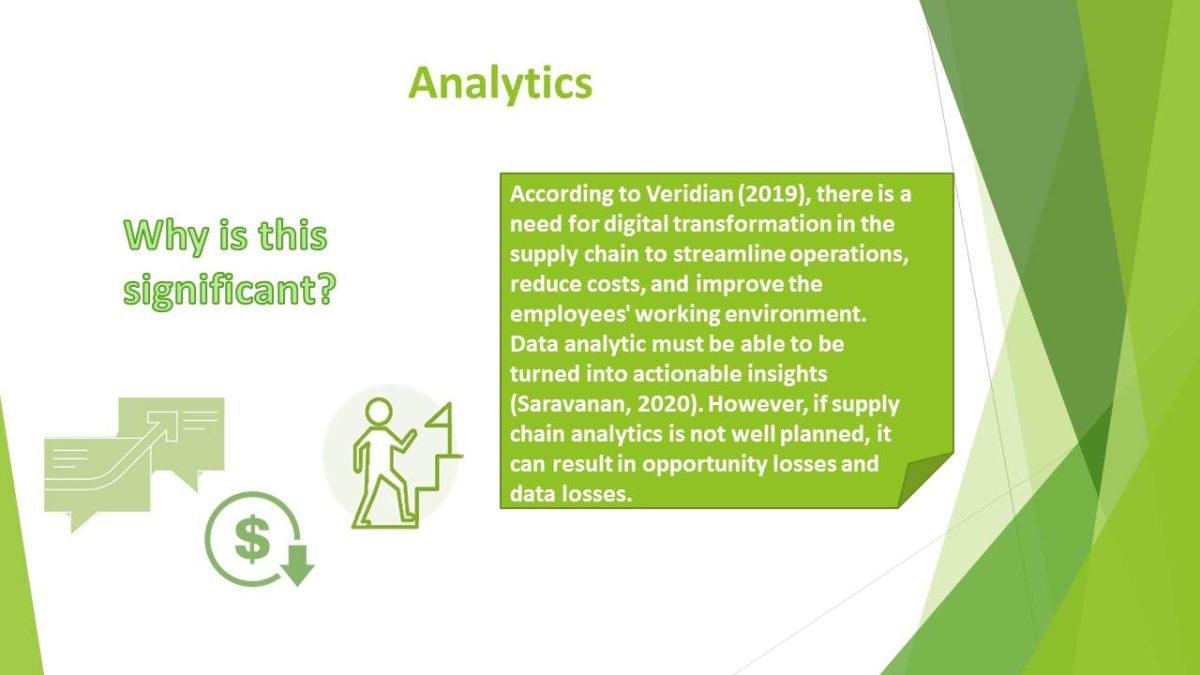
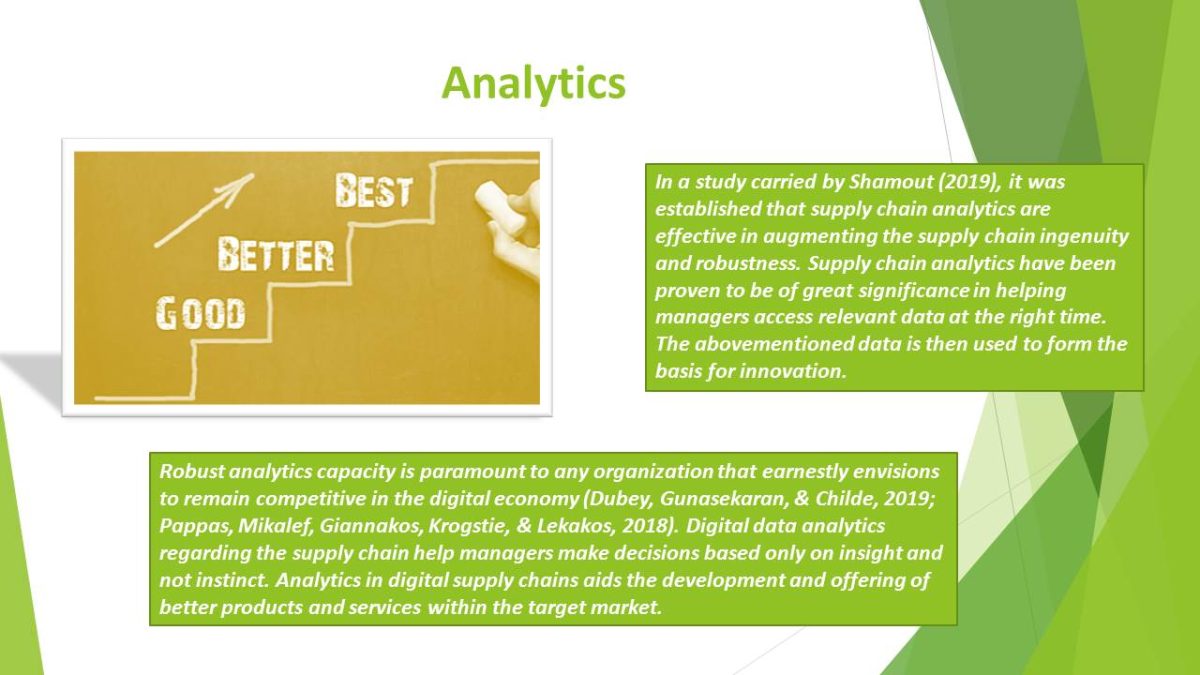
Simulation
Why is this significant?
Simulations are effective in the analysis of the supply chain. A simulation is an effective tool in assessing, investigating, evaluating, and observing the real-life logistics of supply chains and eventually aid in management. Simulations are admissible where traditional methods are deemed incapable of handling the intricacy and interactions of phenomena.
According to Wang and Li (2021), simulations aid in the realization of precise and resourceful matching between colossal information and the clients to help improve services being delivered throughout the supply chain. According to Tordecilla, Juan, Montoya-Torres, Quintero-Araujo, and Panadero (2021), simulation allows managers to plan for uncertainties, time efficiency, and appropriate strategies.
Simulations are essential tools in investigating the behavior of a supply chain instead of only assessing the optimal results (Özceylan, Çetinkaya, Demirel & Sabırlıoğlu, 2018). Simulations are effective in helping managers have better identification and planning on real-life challenges that can arise in a supply chain.
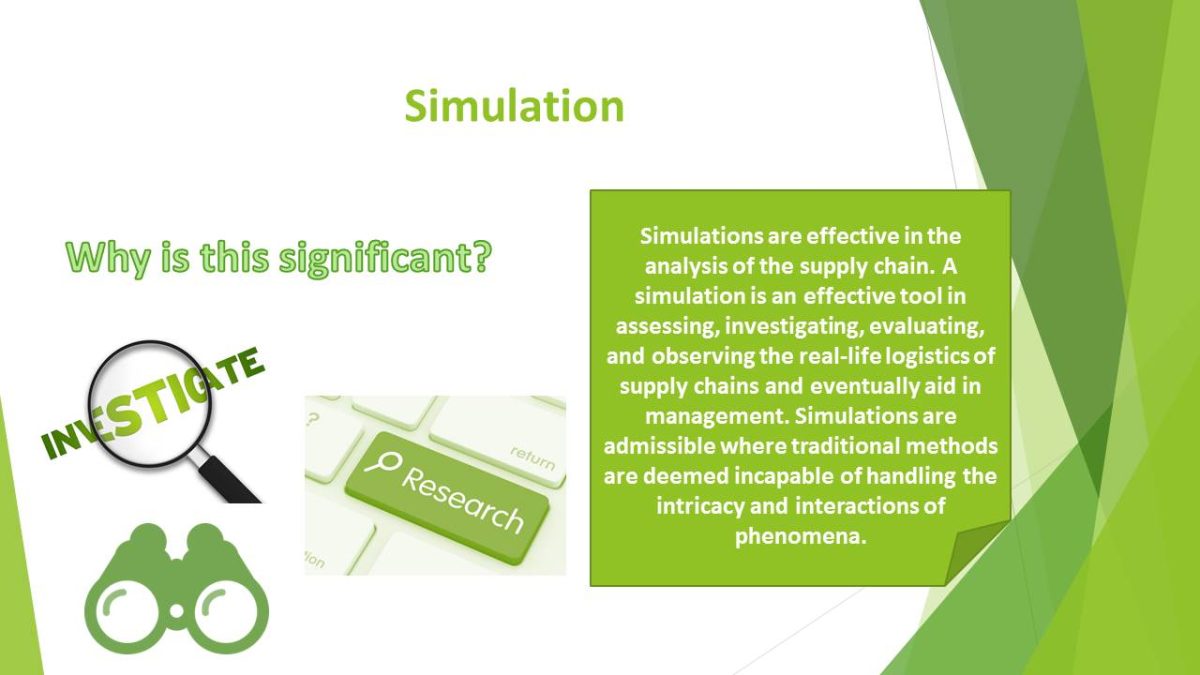

Optimization
Why is this significant?
According to IBM (n.d.), supply chain optimization entails applying information technology such as AI, IoT, and block chain in improving performance and efficiency in a supply chain. When a supply chain is well optimized, there is increased business efficiency and responsiveness. Eventually, clients will quickly get whatever they want at their convenient time and location profitably to the business. Optimization makes the supply chains more sustainable.
According to IBM (n.d.), the following are some of the uses of supply chain optimization:
- Silos;
- Client Needs;
- Competitive Advantage;
- Sustainability;
- Agility.
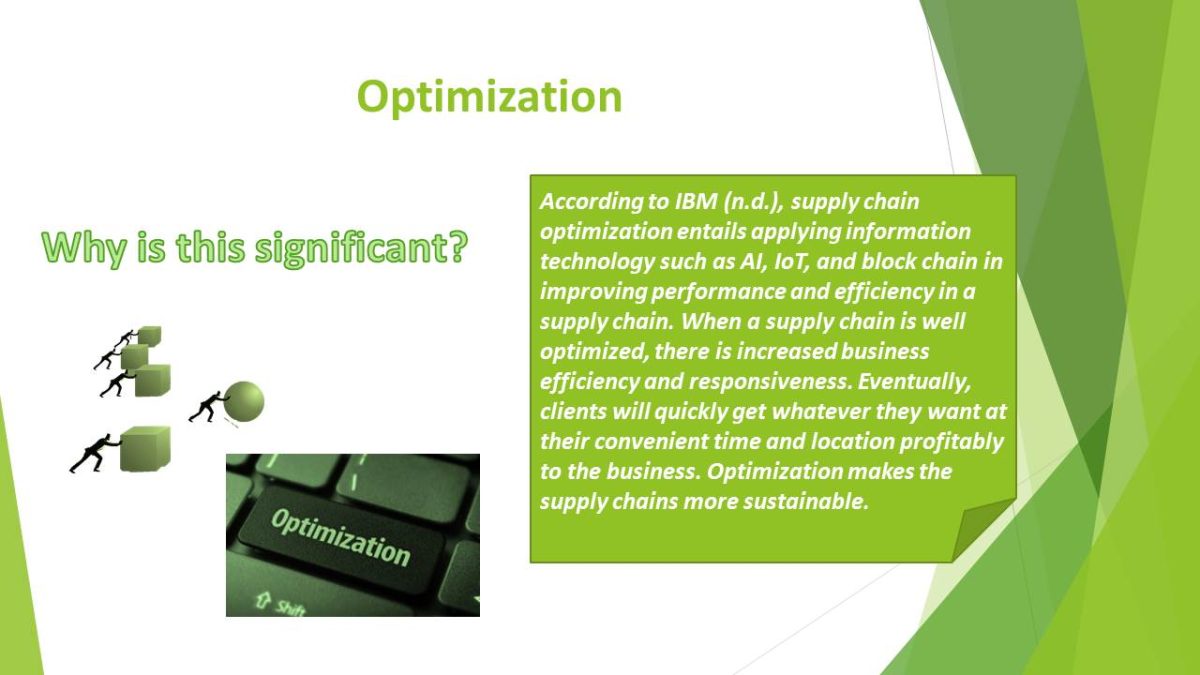
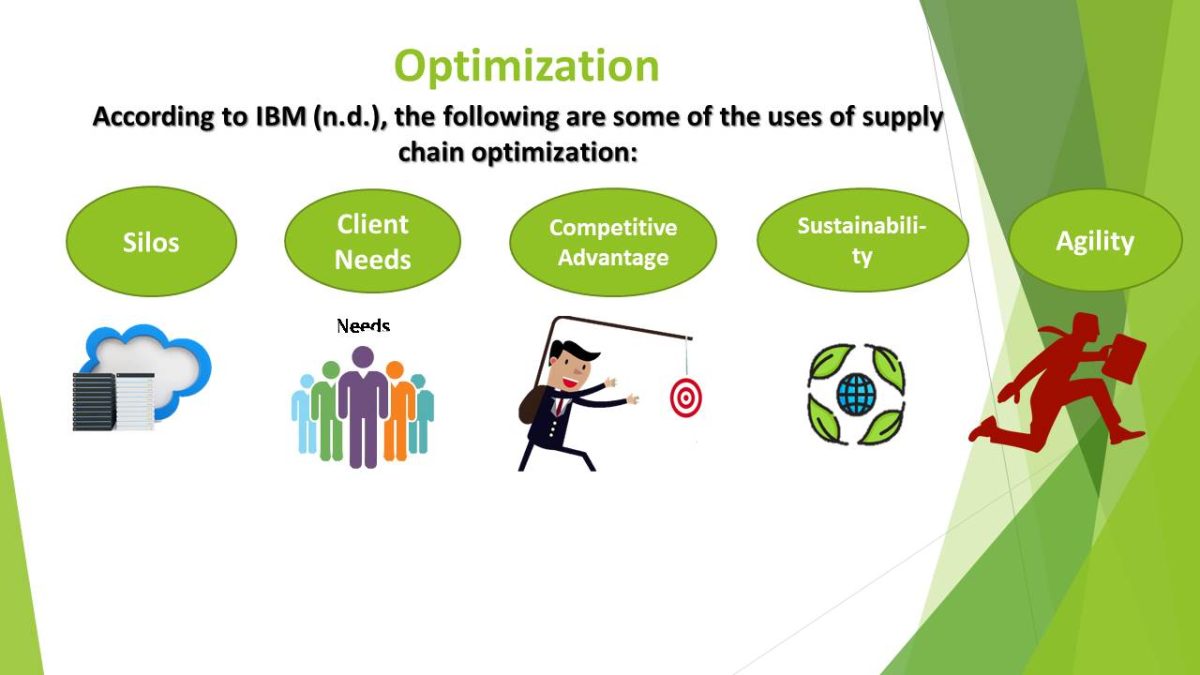
Roadmap for Embedding Technologies
Supply Chain Optimization:
- Design;
- Planning;
- Execution.
Supply Chain Analytics:
- Business Problem identification;
- Find data;
- Choosing right team;
- Selection of suitable tools;
- Implementtion of analytics;
- Measurement of success.
Supply Chain Simulation:
- Products;
- Facilities;
- Vehicles;
- Routes.
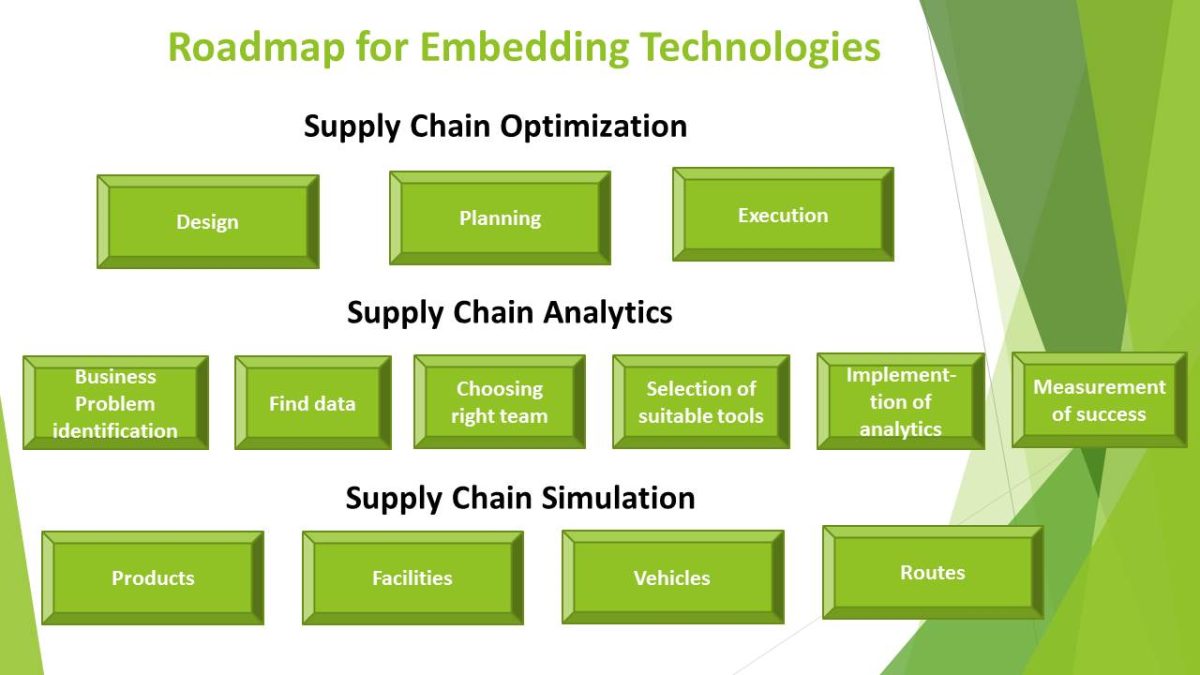
Why us?
- Experience: For more than 15 years, DigiX* company has successfully offered consultation services on supply chain digital transformation to more than 200 companies globally.
- Professional Employees: The company has 35 IT professionals that constantly offer consultation to clients regardless of location.
- High-quality consultations: The DigiX* company has consultancy professionals proficient in the majority of the famous supply chain management systems. For instance, we have 12 members conversant with the Enterprise Resource Planning (ERP) system, among others.
DigiX* company is conversant with the delicacy of the framework embodying the YorkMart supply chain and guarantees a total high degree of professionalism. Since YorkMart organization uses an ERP system, our company is more than willing to offer the consultation service of this system. The consultation will also entail services on supply chain optimization, simulations, and analytics. Our prices are affordable, and we are professional. If granted this opportunity to offer the above mentioned services, we assure you that you will see a significant improvement.
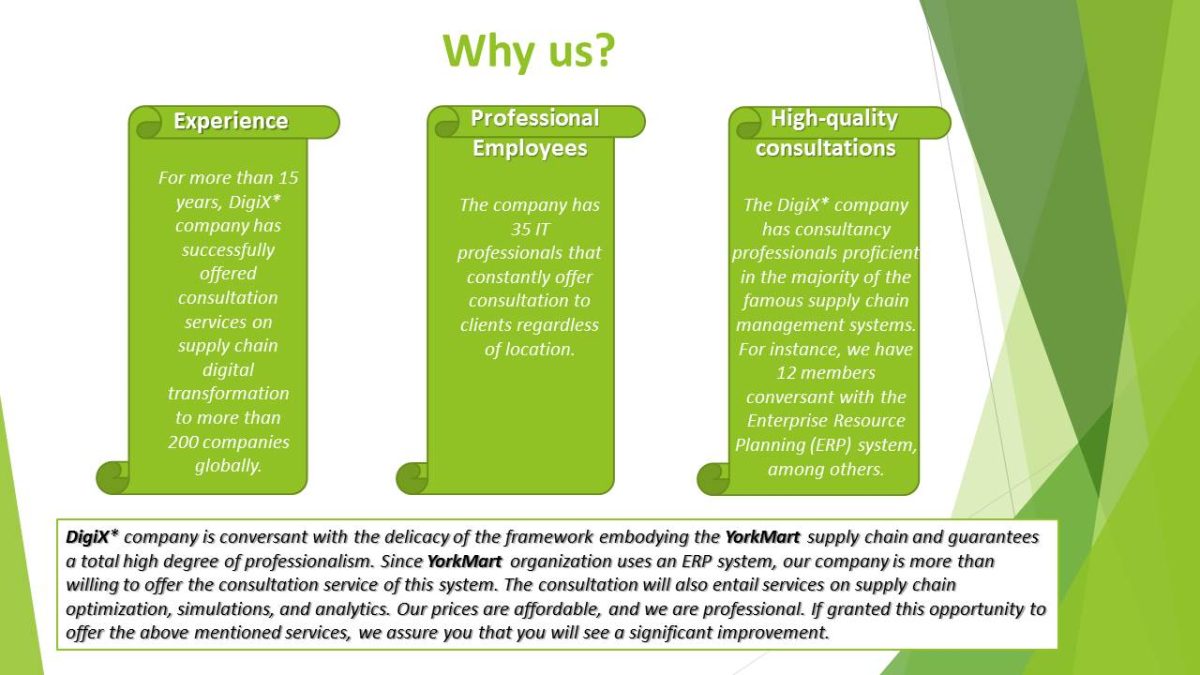
References
Agrawal, P., & Narain, R. (2018). Digital supply chain management: An overview. IOP Conference Series: Materials Science and Engineering, 455(1), 1-6. Web.
Dubey, R., Gunasekaran, A., & Childe, S.J. (2019). Big data analytics capability in supply chain agility: The moderating effect of organizational flexibility. Management Decision, 57(8), 2092-2112. Web.
IBM. (n.d.). What is supply chain optimization? Web.
Markoff, R. (2020). Digesting the shocks: How supply chains are adapting to the COVID-19 lockdowns. Web.
Morley, M. (2017). Supply chain analytics. Chichester, CH: John Wiley & Sons, Ltd.
Özceylan, E., Çetinkaya, C., Demirel, N., & Sabırlıoğlu, O. (2018). Impacts of additive manufacturing on supply chain flow: A simulation approach in healthcare industry. Logistics, 2(1), 1-20. Web.
Pappas, I. O., Mikalef, P., Giannakos, M. N., Krogstie, J., & Lekakos, G. (2018). Big data and business analytics ecosystems: paving the way towards digital transformation and sustainable societies. Information Systems and e-Business Management, 16, 479-491. Web.
Quayson, M., Bai, C., & Osei, V. (2020). Digital inclusion for resilient post-COVID-19 supply chains: Smallholder farmer perspectives. IEEE Engineering Management Review, 48(3), 104-110. Web.
Saravanan, S. (2020). Digital supply chain transformation: Preparing for future growth. Web.
SCM Globe. (2015). Supply chain simulation in 6 easy steps. Web.
Shamout, M. D. (2019). Does supply chain analytics enhance supply chain innovation and robustness capability? Organizacija, 52(2), 95-106. Web.